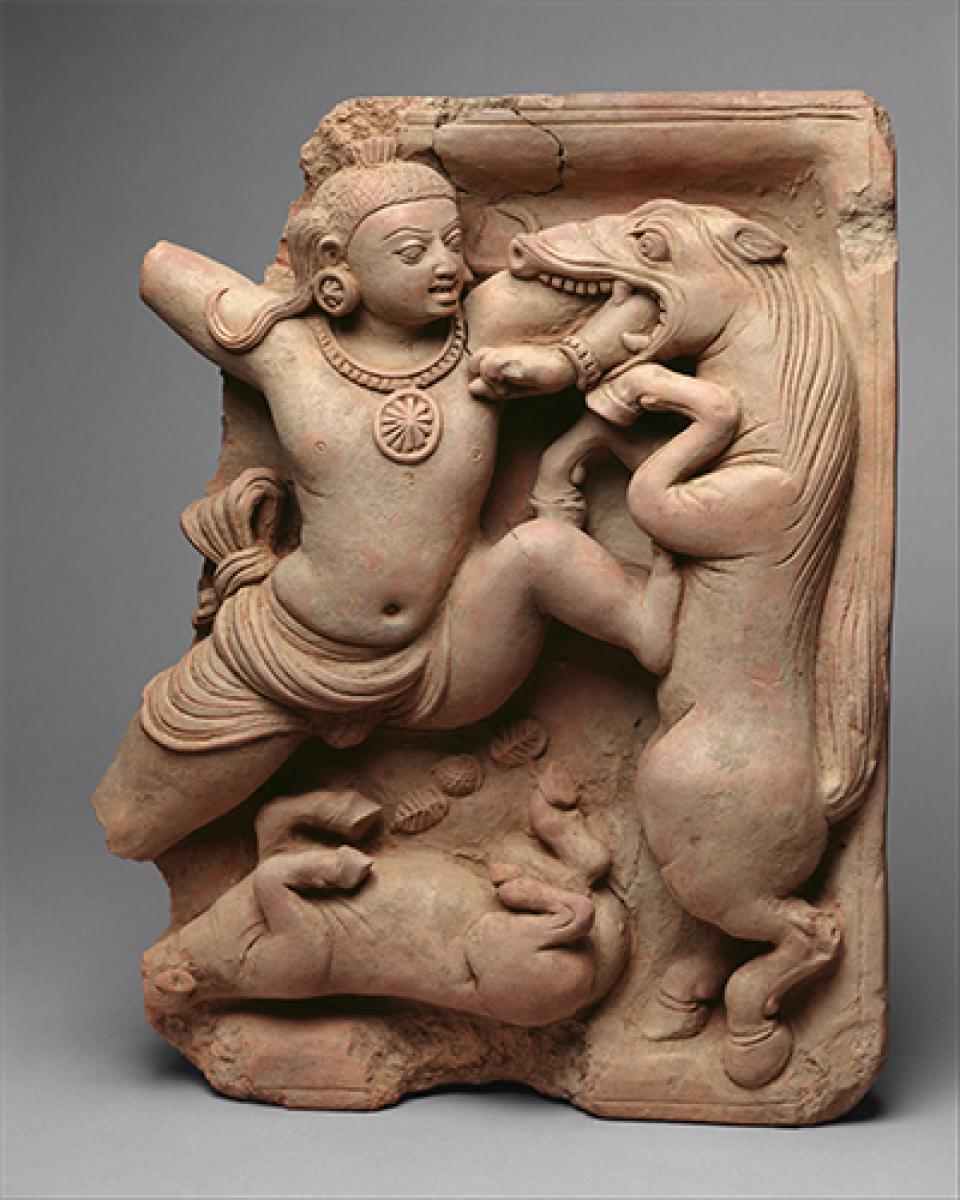Live
- Mamata doesn't want INDIA bloc to succeed, claims BJP's Rahul Sinha
- Air India Express cancels flights at Chennai airport due to deluge
- Kejriwal promises Rs 2,100 for Delhi women if AAP wins polls, BJP takes ‘lollipop’ jibe
- JPC Chairman supports Assam govt's 'No NRC, No Aadhaar,' rule
- Stoinis vows to revive Melbourne Stars’ glory with fresh leadership
- DDA easing freehold conversion of shops: MoS Sahu
- CP Sudheer Babu Updates on Manchu Family Cases
- Keerthy Suresh Marries Long-time Friend Antony Thattil in Goa
- Siddaramaiah govt defends police action on Panchamasali Lingayat protesters
- India fined for slow over-rate in second WODI against Australia
Just In

The last phase of ancient Indian history starts in early fourth century A.D. and ends in about the 8th A.D. The Guptas built a strong and powerful kingdom and under the political unity and state patronage that was provided by them, cultural activities increased manifold.
The last phase of ancient Indian history starts in early fourth century A.D. and ends in about the 8th A.D. The Guptas built a strong and powerful kingdom and under the political unity and state patronage that was provided by them, cultural activities increased manifold.
.jpg) You will recall that following the Greek invasion, various art forms in India had been markedly influenced by Graeco-Roman styles. This art mainly depicted the Buddha or Buddhist thought. But during the Gupta period art became more creative and Hindu gods and goddesses also came to be portrayed. The artistic achievement of the age is exhibited in the delicate workmanship and the variety of designs shown in different kinds of Gupta coins.
You will recall that following the Greek invasion, various art forms in India had been markedly influenced by Graeco-Roman styles. This art mainly depicted the Buddha or Buddhist thought. But during the Gupta period art became more creative and Hindu gods and goddesses also came to be portrayed. The artistic achievement of the age is exhibited in the delicate workmanship and the variety of designs shown in different kinds of Gupta coins.
The general scheme that was followed was to exhibit the portrait of the king on one side of the coin or an appropriate goddess with her associated symbols on the other side. The king is shown in many positions - shooting a tiger or a lion, playing a musical instrument seated on a high backed couch etc.
On the reverse in most cases was Lakshmi, the goddess of wealth and in some cases Saraswati, the goddess of knowledge and arts. Besides coins, Gupta art found adequate expression in monuments and sculptures. The skilled artists of this age used their tools and skills to express the ideals and philosophical traditions of India through various art forms.
They decorated even the niches and corners of religious places with statues of gods and goddesses. The images of gods were treated as symbols representing attributes associated with the gods. Hence the god were shown having four or eight arms in each carrying a symbol or an ayudha (weapon) although they were depicted in human forms.
Stone, terracotta, and other materials were used to construct the abodes of gods and goddesses. Examples of the Gupta art can be seen at the dashavatara temple at Deogarh and the cave temples in Udaigiri hills. However, the most famous examples of Gupta art that still remain are the numerous seated and standing images of Buddha from Sarnath.
The school of art that thrived at Sarnath provides us with some of the most pleasing and graceful images of the Buddha. Besides stone, Gupta artists were also skilled in bronze. A two metre high bronze image of Buddha has been discovered at Sultanganj (near Bhagalpur in Bihar). Examples of sculptures in caves created during this period are traced to the famous Ellora Caves.
Architecture
The Gupta architecture has survived in a few shrines, rock cut caves (Ajanta) and temples, such as the Dashavatara temple at Deogarh. These structures were mainly made of stone and bricks. Some references in the works of Kalidasa give us a glimpse of Gupta architecture.
The poet has given a vivid picture of a well-planned town with a network of roads, market places, big sky-touching palaces and mansions with terraces. The palaces had many inner apartments. They had court-yards, prisons, court-room and sabhagriha. Their verandahs opened on roofs lit with moon-beam at night.
The pleasure garden which was attached to palace contained all sorts of seasonal flowers and trees. Archaeological evidence about Gupta architecture is however poor. However, examples of Gupta shrines have been discovered in the jungles of Central India, especially in the Bundelkhand region. These include the one at Bhitargaon in Kanpur district.
Painting
Painting as an art form reached a high degree of perfection during the Gupta times. The wall frescoes at the Ajanta caves (Aurangabad) and the one at Bagh caves (near Gwalior) bear evidence of this. Although Ajanta paintings belong to the period between the first to the seventh century AD yet most of these were produced during the Gupta time.
These paintings depict various scenes from the life of the Buddha. The skill with which the human, animal and plant figures have been drawn shows the refined and sensitive nature of Gupta art. The conception of beauty was a characteristic of Gupta art. Expression through art was given importance as it was regarded as a means for the attainment of spiritual joy.

© 2024 Hyderabad Media House Limited/The Hans India. All rights reserved. Powered by hocalwire.com







